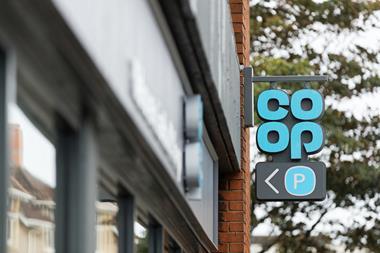It’s hardly news that the economy is in bad shape. A double-dip recession seems ready to turn into a triple, and job losses are a regular headline. Economists predict that we’re going to be in the doldrums for some time to come, too.
43%
of households believe their finances will get worse this year
Source: Markit Household Finance Index
Closer to home, household budgets are being squeezed ever tighter. Energy and water rates are increasing, as are fuel and transport costs, leading shoppers to count the pennies as much as possible in order to get by.
According to the Household Finance Index, compiled in December 2012 by Markit, 43% of British families believe their finances will worsen over the course of 2013, 33% believe they will remain the same as in 2012, leaving just 24% who optimistically believe their finances will improve this year.
Markit senior economist Tim Moore says that this means households will be keeping a close eye on what they are spending. “Households are bracing themselves for another year of squeezed personal finances in 2013,” he says. “The vast majority of households anticipate that their financial well-being will either worsen or stagnate.”
Moore believes that this pessimism will have a big impact on British shopping habits. “With three-quarters of all households not expecting any improvement in their finances, the latest survey suggests that domestic consumer demand will remain under pressure in the near term, especially since inflation perceptions remain elevated and job insecurities are prevalent across the UK.”
While this makes for sober reading, it isn’t all bad for small retailers. The increased scrutiny on household finances presents an opportunity for independent retailers to provide that value offering which their customers are so desperately seeking.
Up until lately, it was difficult to visit a store without being surrounded by Buy One Get One Free (BOGOF) offers. However, these are increasingly being phased out in favour of lower price points on single items to help customers keep a handle on exactly what they are spending, as well as cutting down on wastage.
Hena Chandarana, shopper marketing controller at United Biscuits UK, says this is a sign that consumers have already attuned themselves to the value issue, but are thinking it through even more than before.
“Value for money has always played an important role in shopper behaviour but, as the current economic climate has put increased pressure on customers, it’s now become an essential factor in a shopper’s decision-making process,” she says.
Retailer’s view
“We have a lot of items on promotion and that attracts customers. Even though the margins are a little tighter, customers see the promotions and assume that everything in the store is as good value. This allows me to recoup some of the margins back on other items as customers don’t pay as much attention to prices of everyday items, but still have a goodwill feeling towards the store.
“We rotate our promotions every four weeks and try to have them on as wide a range of products as possible in order to cater for all customers. It’s the promotions that will bring customers to the store so it’s important that they are on the right products.
“We also stock a range of own-label products that do very well. Customers are no longer fussy about buying own-label and the quality of the products is now so good that shoppers are willing to buy them to save money.”
Manish Jadav, Go Local Extra, Bradford
“Consumers have become more savvy about promotional offers and are starting to move away from volume deals such as BOGOFs, especially within the convenience channel where consumers are more likely to do their top-up shop. They are now paying more attention to the immediate cost of their basket spend rather than the long-term savings on offer through volume deals.”
Nisa retailer Rav Garcha, who owns four stores in the West Midlands, says he has certainly seen demand for value grow and has attempted to meet it by altering his range to stock more of the ranges they want. “As retailers we should be trying to put the customer at the centre of the business and, right now, they want value for money,” he says. “Convenience was traditionally about selling something at the highest price possible, but that is now flawed as we have to be seen to be competing on price.”
He also believes that in the quest to save money, consumers have turned to another form of retailer, the pound store, creating yet more competition for independents. “In pound shops, there are so many products that we couldn’t dream of offering at £1,” says Rav. “And now that they’re offering products in such a professional category-led manner, they’re a real threat to us.
“We need manufacturers to supply the same products and sizes to the independent channel at a price that we can challenge the pound shops at.”
Make your mark
It may be a struggle to take on the pound shops, but there are several weapons independents can use to win over the value shopper. Once the mortal enemy of independent retailers, pricemarked packs (PMPs) are available in every category and offer a level of transparency to customers that they haven’t before seen.
According to HIM’s 2011 PMP survey, the demand for value is also destroying brand loyalty, as 48% of those who responded to a survey said that a PMP would encourage them to switch from a preferred brand. The mechanism also helps with getting new products off the ground, with 53% of respondents saying they would try NPD if it had a pricemark on it.
Interestingly, HIM’s research also revealed that 46% did not know the rrp of any of the products listed in the survey.
Rav agrees that consumers need some educating on pricing, especially when it comes to promotional pricemarking. “The consumer now believes that the promotional price is the actual price and that the real price is a marked-up price that they wouldn’t consider paying,” he says. “Value has been eroded from the market and even though we put up POS with the offer prices and the original, they still think that the offer price is the original one. It’s changing how people shop and retailers need to move with that change.”
Kepak Convenience Foods channel director Angela Daulby says that retailers have now accepted the use of PMPs. “In our experience, standard PMPs no longer divide opinion as they did a few years ago,” she says. “We’ve found that the overwhelming majority of retailers accept the role that PMPs can play in boosting sales, primarily because of their proven ability to do so.
“Consumers have confidence in PMPs providing value for money and this is important at a time when price sensitivity is on the increase.”
Simon Gray, managing director at energy drinks supplier Boost, believes that pricemarked packs instill confidence and generate goodwill between the retailer and the customer.
“Pricemarking provides reassurance for everyone that they are getting the best value for money at a consistent price. The recent negative publicity about the major multiples and their special offers means this is even more important for the independent sector - pricemarking confirms that the brand and its value can be trusted.”
The changing face of tobacco
No category is exempt from the demand for value, the tobacco market included. It has seen a raft of pricemarked products launched as a result.
In 2012 pricemarked packs (PMPs) accounted for 29.2% of total cigarette volume sales, up from the previous year’s figure of 25.6%. PMPs proved to be even more popular in the impulse channel, accounting for 56.2% of volume sales, up from 2011’s figure of 50.6% (Nielsen November 2012).
The popularity of pricemarking in the impulse channel highlights how consumers want to keep a closer eye on their finances, but not necessarily at the expense of taste.
“Consumers now expect more for their money without sacrificing quality,” says Philip Morris International UK marketing manager Zoe Smith. “Recognising the importance of this segment, we launched Chesterfield, a high-quality cigarette with an rrp of £5.99.”
According to Smith, the trend towards value has been at the expense of loyalty. “Latest statistics show that out of all adult smokers who switch brands, 90% are switching to a lower price segment,” she says.
Andreas Nicolaou, head of trade at BAT UK, says that the roll-your-own (RYO) category has also profited from cash-conscious shoppers. “The RYO sector saw considerable growth in 2012 and we believe it will continue to do so as adult smokers downtrade in the search for value,” he says. “Pall Mall RYO has seen a volume growth of 71% in independents in 2012 compared with 2011.”
According to Nicolaou, this trend isn’t going to stop any time soon. “The economic downturn has driven an increase in the popularity of pricemarked packs,” he says. “With no real signs of improvement in the economy, we believe the trend towards pricemarking will continue.”
Allied Bakeries is just one manufacturer to have adapted its range to include more pricemarked packs. Category director Guy Shepherd says that it enables retailers to offer confidence to the customer. “Pricemarked packs allow the retailer to reassure their shoppers that a product is value for money, and as a result means they are more likely to purchase it,” he says.
“All of our products are available in both pricemarked and unpriced packs as we believe it’s important to offer choice across the range. Our pricemarked packs feature our regular price points, rather than offer prices, as again we believe it’s essential to retain the value and trust placed in our brand.”
Gray also believes it is important to offer retailers a choice. He says: “Across our entire product range there is a 60/40 split in favour of pricemarked packs, which reflects the importance of offering a choice and the diversity of retailers’ needs. However, when it comes to our 250ml cans, 80% of sales are from PMPs, which is why pricemarking remains an essential part of our strategy as a business.”
Manage margins
Vimto Soft Drinks marketing manager Emma Hunt believes fears about PMPs eroding margins are often unfounded as the rate of sale makes up for any loss.
“PMPs definitely offer good profit margins for retailers as the lower wholesale selling price in depot will help deliver a worthwhile return in store. For example, a £1 PMP pack cost is £6.93, with a wholesale selling price of £7.49, providing a profit on return of approximately 25%. As the PMP rate of sale is generally higher, increased sales will make up for any lost cash margin on a like-for-like basis.”
Chandarana puts it more bluntly: any retailer still wary of PMPs needs to wake up fast, she says. “PMPs should be seen as opportunity for retailers as opposed to an issue, as they enable stores to deliver the visible value for money consumers are looking for, allowing them to drive sales by offering trusted brands at a low price point.”
Ones to watch
Mark of quality
Pernod Ricard is to put pricemarks on its Campo Viejo tempranillo from this April. Bottles will carry a £6.99 pricemark, which will be supported by POS material. The company hopes the move will help retailers drive value sales in the Spanish and Rioja categories.
tel: 020 8538 4484
Think big
Britvic and PepsiCo UK has introduced a ‘20% bigger’ on-pack flash for its key lines. The flash will feature on all 600ml bottles of Pepsi Max, Diet Pepsi, 7UP Free and Tango and has been designed to better communicate the size and value that bigger bottles represent for shoppers.
tel: 0845 7581781
In a flash
Jordans Cereals has introduced a pricemarked pack of its 500g Crunchy Oat Granola Raisin & Almond. Featuring a £1.99 flash, the pack is designed to help grow the granola sub-category which has increased by 27.7% year on year (Nielsen 52 week ending February 9, 2013)
tel: 01452 378 500
Sweet side
Bazooka Candy Brands has added pricemarked packs for Mega Mouth, Juicy Drop Pop, Big Baby Pop and Push Pop. Juicy Drop Pop is pricemarked at 99p Mega Mouth at 89p Big Baby Pop at 79p and Push Pops have a 39p flash. POS units allow the pricemarked products to be merchandised together.
tel: 020 8210 1508
Extra fizz
Coca-Cola Enterprises has updated its portfolio. Coca-Cola, Diet Coke, Coke Zero and Cherry Coke 500ml PET are marked ‘2 for £2’ Oasis, Fanta, Fanta Fruit Twist, Sprite, Powerade Sport and Dr Pepper 500ml are flashed at £1 while Coca-Cola, Diet Coke and Coke Zero 4x330ml cans have a £1.99 pricemark.
tel: 0845 224 222
While the price may be right, there is also the placing of the promotion to consider. As the esteemed marketer E Jerome McCarthy wrote in 1960, there are four ‘Ps’ that make up a successful marketing campaign. You have the product at the right price in a promotion that will appeal to your customers. Now all you need is the place.
Chandarana explains: “Shoppers are more likely to buy on impulse if packs are pricemarked, so while PMPs generally perform anywhere in the store, one area where they’re particularly successful is at the till point.”
According to Tim Ellis of retail marketing agency Momentum Instore, as well as being cash-poor, consumers are time-poor, so correct siting of promotions is key. “Shoppers do not want to wander around a store looking for deals. They want to be able to find them quickly and easily,” he says. “Consumers come into stores looking for deals, therefore an end of aisle gondola highlighting the offers of the week is going to drive sales.”
Source
Aidan Fortune































